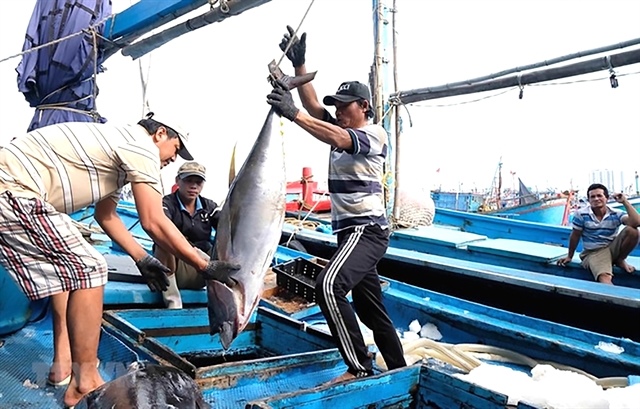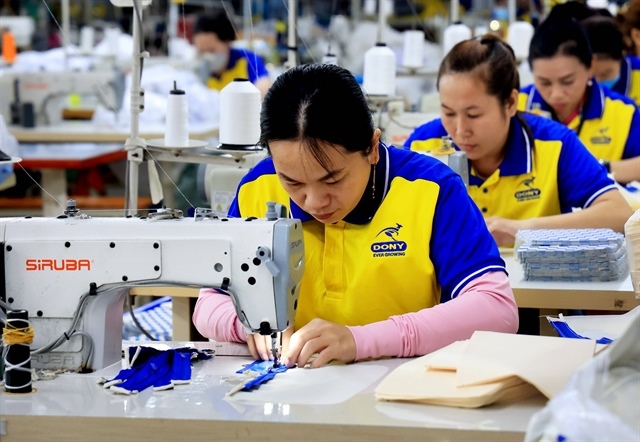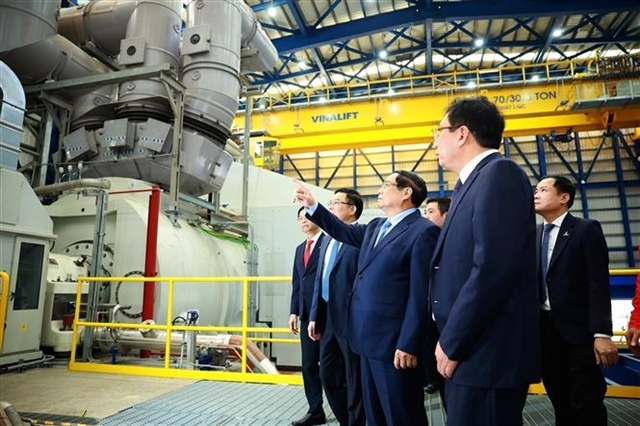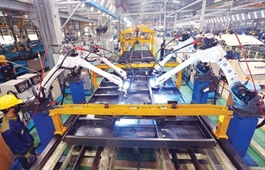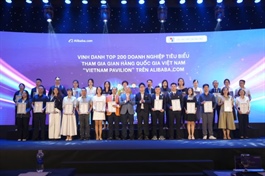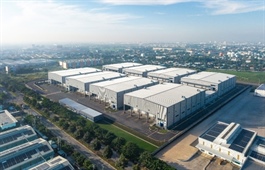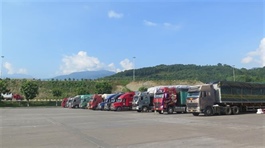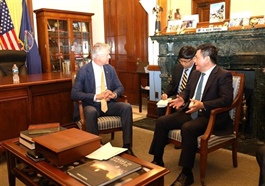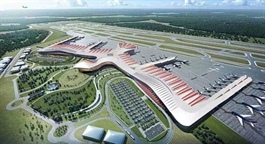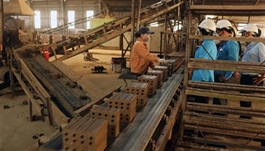Businesses urged to invest proactively in face of tariffs
Businesses urged to invest proactively in face of tariffs
As global tariff policies become increasingly complex, Vietnam is being urged to adopt adaptive strategies to mitigate adverse impacts on its export enterprises and safeguard the stability of domestic supply chains.

Enterprises can restructure operations to enhance value, go digital, and comply with global standards, photo Le Toan |
Do Khoa Tan, deputy secretary general of the Vietnam Electronics Industries Association, emphasised the critical importance of understanding all tariff policies in the context of global supply chain shifts in Ho Chi Minh City last week.
“As Vietnam increasingly positions itself as a strategic manufacturing hub, thoroughly understanding and adapting to new policies is a matter of survival for businesses,” Tan stated at a seminar on US tariffs and supply chain shifts on May 29.
“In the face of tariff turbulence, enterprises must prioritise core strategies. They need to effectively leverage free trade to boost exports to the EU, Japan, and ASEAN; apply advanced technologies and renewable energy to meet international standards; boost supply chain transparency by ensuring clear product origin; and mitigate legal risks in an increasingly regulated global trade environment,” Tan added.
Meanwhile, Do Thi Thuy Huong, vice president of the Vietnam Association of Supporting Industries, suggested that Vietnamese businesses need to move from subcontracting to developing their own original brands to increase intrinsic value.
“Companies that have heavily invested in technology, science, and human resource development have proven their resilience and confidence during uncertain periods and have continued to maintain and expand their production orders,” Huong noted. “Many businesses across Vietnam have proactively invested in automation, AI, and robotics to improve production capacity and stay ahead in the evolving global supply chain.”
In light of the US plan to raise import tariffs on certain goods after July 8, both Tan and Huong recommend that businesses must accelerate the export of signed orders and prioritise early delivery during the current period of tariff exemption or reduction and optimise logistics costs through collaboration with major shipping lines to reduce operational risks.
To avoid overreliance on a single market, Vietnamese enterprises must fully leverage the existing free trade deals. For example, textile and footwear sectors can benefit from zero per cent tariffs when exporting to the EU or Japan while electronics and component industries should focus on South Korea, ASEAN, and emerging markets such as India, the Middle East, and Africa, where demand is growing and competition remains relatively low.
Additionally, businesses are encouraged to strengthen partnerships with US importers and associations such as the American Chamber of Commerce, shift towards sustainable manufacturing, and scale up the production of high-tech goods such as semiconductors and AI components.
Enterprises should also focus on restructuring operations to enhance value and competitiveness, accelerating digital transformation, expanding into e-commerce, ensuring compliance with international standards, and developing response strategies for various potential tariff scenarios.
Vietnam currently holds the fifth-largest trade surplus with the US, at more than $104 billion in 2024.
Nevertheless, the shift in supply chains away from China presents a valuable opportunity for Vietnam to expand its export industries and attract investment. At the same time, this transition places significant pressure on the country’s infrastructure, workforce development, and supply chain management capabilities, the experts agreed.
|
Dr. Vu Thanh Tu Anh, senior lecturer Fulbright School of Public Policy and Management The risk does not lie solely in tariffs, but more critically in non-tariff barriers. These measures can be even more impactful, unpredictable, and severe than tariff-based ones. Tariffs come with a clearly defined rate, but non-tariff barriers are often ambiguous and associated costs can be hard to estimate. Sometimes, we cannot even account for them when drafting contracts. Non-tariff measures can change rapidly and have immediate effects on businesses that are beyond control, and cannot be managed through traditional risk mitigation approaches. Looking at global market trends, over the next 3-5 years, the US will remain the largest import market. However, beyond that, demand from Asia is projected to take the lead, indicating a clear pivot to Asia. The global economic growth hovering around 3 per cent, while Asia’s growth rate stands at approximately 5.5-6 per cent. This signals an inevitable economic shift towards the Asian region. We hope the government will support enterprises in executing a strategy to diversify export destinations. Another fundamental issue is that internal strength, rather than external conditions, will determine the long-term success of Vietnamese enterprises and the national economy. Hence, every effort must be made to enable businesses to lower costs, expand operations, and minimise legal risks. If we can achieve this, I firmly believe that with Vietnam’s existing internal strengths and human potential, the country is fully capable of taking off. Khoa Nguyen Augustine, product development expert When foreign-invested groups come to us, their first question is not “Where can we rent cheap factory space?” but rather, “how long will it take to complete construction and start exporting?”. The second question often raised is whether industrial parks (IPs) in Vietnam are equipped with local suppliers capable of delivering components in a timely manner, and whether those components meet the quality and standards required by export markets, especially markets like the US. What may seem like a simple question actually reveals a pressing issue. Are Vietnam’s IPs shifting from a model that merely rents land and factory space to one that actively enables supply chain restructuring? Today’s investors seek comprehensive transformation platforms, not just physical infrastructure but also flexible digital and operational ecosystems. Therefore, at our IPs, we don’t just offer hard infrastructure, but also emphasise soft infrastructure, including green and eco-industrial parks, use of renewable energy, integration of digital technologies, and compliance with carbon footprint standards as required by European markets. For example, in Binh Duong province, some industrial areas have already adopted one-stop services, reducing procedural time from nine months to just three months, which is a game-changer for investors. The localisation rate of enterprises highlights the urgent need for IPs to foster linked industry clusters that can quickly provide local components, reduce lead time, cut costs, streamline procedures, and, most importantly, ensure transparent rules of origin for global trading partners. Cong Tang Ton Nu Thuy Trang general director, ITO Vietnam We take great pride in the fact that, although ITO is a foreign-invested enterprise, it is entirely operated by Vietnamese professionals. Tax policies have a significant impact on the operations of all companies, and ITO Group is no exception, especially as we also export our products to the US market. In response, our current strategy is to restructure our domestic supply chain to reduce the effects of tariffs. At the same time, this restructuring process must serve multiple objectives. Among them, the most important is market diversification, expanding into other countries and regions beyond the US. Secondly, our products are over 80 per cent localised, entirely manufactured in Vietnam. When it comes to importing raw materials and components, we prioritise sourcing from countries that benefit from preferential trade agreements with the US, such as India. We strictly adhere to transparent business practices, especially in verifying and documenting the origin of all imported materials. By ensuring clarity and compliance from the input stage, we are able to minimise disadvantages and risks at the output stage, especially in export markets. Thirdly, we have established a legal and compliance department that is specifically responsible for monitoring and managing global tax regulations, especially in light of the fast-changing policies at present. Lastly, we believe that this period also presents an opportunity for us to reflect and reassess our approach. We must be prepared for any future scenario, including the imposition of the worst tariff. That is why we are committed to a strategy of sustainable development and socially responsible business. In summary, we are actively diversifying our export markets, expanding into Europe, Japan, and beyond. This allows us to reduce reliance on any single market, spread risk, and seize new opportunities in the global landscape. |
- 10:53 13/06/2025



